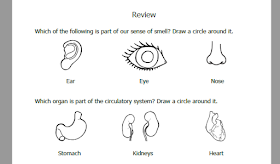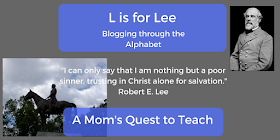This post contains affiliate
links. For more information, please see my Terms of Use and Disclosure Policy
page. Thank you.
I love being able to use products from Home School in the Woods. They provide many different hands-on and interactive products to help teach children history. There are Timeline materials available that can help you teach from the time of Napoleon to present day or Time Travelers sets that let you study U.S. History. And with their A La Carte Projects, you can find a number of smaller hands-on projects to fit into your unit studies or curriculum.
Preparing the Knights Lap-Pak
After you download your Lap-Pak, you will need to unzip the file and then access the Start link – which will open the file in your web browser. From there, a menu will link you to the instructions, audio file, and all of the documents. Once you have accessed the Start Menu, you will be able to click on the various parts necessary for your Lap-Pak.
I sent the print instructions to our tablet so that I could go through the pages as I worked on what needed to be printed – and saw how to print them. The instructions for printing out the Knights Lap-Pak project materials is all very clear. (I do not recommend trying to multi-task because you will need to pay attention closely to what you are doing – especially if you have a temperamental printer like we do!)
It took me about one-and-half to two hours to print everything. This was without any interruptions (but with some not recommended multi-tasking on the computer).
I would recommend you have on hand white printer paper, color printer paper, white card stock, and color card stock before printing out your projects. It is a good idea to read through the directions to see which part requires which type of paper.
 |
| Completed project photographs are available on Home School in the Woods |
Contents of the Hands-on History Lap-Pak (Knights)
So what do you get when you purchase the Lap-Pak? A wealth of information and lots of fun projects! Specifically, you get the following:
- A folder (compressed) with all the necessary PDFs and instructions
- Introduction page with additional resources
- Project Directions
- Directions for Printing the Reading Text
- Booklet in two different formats and as a full binder size
- Audio Reading of the Text
- Lap Book Assembly Directions
- All Necessary PDFs for the Lap Book including
- The Feudal System
- What is a Knight?
- Becoming a Knight
- The Knighting Ceremony
- What Does a Knight Do for Fun?
- A Knight's Armor
- The Tournament
- A Knight's Weapons
- Heraldry
- The Code of Chivalry
- Crusaders
- Famous Knights
- Vocabulary
- Photos of the projects
 |
| Booklet which is available in a number of forms to print |
 |
| Coloring the cover illustration |
 What We Like
What We Like
- The audio reading of the text! This was perfect to listen to while we worked on some of the projects. (The background music is a great addition.)
- The variety of information presented.
- Our five-year-old son and I could work on the projects together.
- For children who love to color, there are so many opportunities to take out the colored pencils and make the Lap-Pak your own.
- There is so much information presented that a child could complete it again when they get older. I can see our family revisiting this project in a year or two and adding to it with some of the suggested readings.
- I love the illustrations that accompany each project. They are detailed enough to provide information but simple enough to make it easy to color them, too.
How We are Using the Knights Lap-Pak
Our son and I are working through the different projects, reading additional books, and watching some movies to further our knowledge of knights and the time period. We work on one part over the course of one or two days. For example, we worked on the vocabulary part over the course of two days. We cut everything out one day and then pasted it together before reading the definitions on the second day. We have since read a definition each time we attach a new piece to our Lap-Pak.
 |
| Vocabulary related to knights and the Middle Ages. |
We haven't finished the Lap-Pak as we are working through it slowly to ensure our son understands the different definitions, concepts, and ideas that we are studying related to knights and the Middle Ages. We still need to finish quite a few projects, so be on the lookout for more photos from us as we complete this Lap-Pak!
What I Found Confusing
For someone who has never completed a Lap-Pak before, I did find it a bit confusing. However, as long as I was able to keep referencing the instructions, I was able to complete everything just fine.
The only mistake I seemed to make was in printing the Crusaders. I fed the paper into the printer the wrong way so it didn't line up right. And then I forgot to print out the drawings. And then my son colored them the completely wrong colors. So I spent more time printing the Crusaders pages than the rest of the pages. My advice: measure twice and cut once (or read the directions twice and print once!).
 |
| I wrote the colors to the side for each tunic, shield, and cape because we wanted to color them the correct colors. |
 |
| Referencing the photos that show the completed parts is a great way to check your work! |
Other Products from Home School in the Woods
Home School in the Woods offers so many great products. Our family was able to review several of their Á La Carte Projects previously including the Pirate Panoply game and The War to End All Wars Game. I still look forward to using more of their products including a new one that was just released – Project Passport: Ancient Rome. It contains hands-on projects and activities for students in grades 3-8 which can be used over the course of 8 to 12 weeks. What an exciting contribution to their Project Passport World History Studies collection!
For more information, please visit the following:
If you visit the Lap-Pak: Knights (K-2) site, you will find links to scope and sequence information and a sample of the audio recording.









































